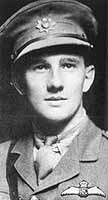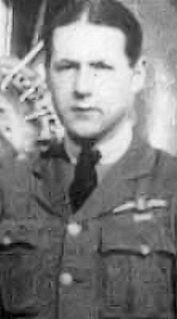Related Research Articles
William Ernest Shields DFC & Bar was a Canadian First World War flying ace, officially credited with 24 victories.
Captain Carleton Main Clement was a Canadian First World War flying ace officially credited with 14 victories despite being handicapped by flying an obsolete plane.
Captain John Victor Sorsoleil MC was a Canadian First World War flying ace, officially credited with 14 victories.
Captain Thomas Frederic Williams MC was a Canadian First World War flying ace, officially credited with 14 victories.

Air Vice Marshal George Roberts Howsam, CB, MC was a Canadian First World War flying ace, officially credited with 13 victories.
Captain Ernest Charles Hoy DFC was a Canadian First World War flying ace, officially credited with 13 victories. He later pioneered airmail flight over the Canadian Rockies.
Captain Ronald McNeill Keirstead DSC was a Canadian First World War flying ace, officially credited with 13 victories.
Wing Commander Allan Runciman Brown was an Australian World War I flying ace credited with five aerial victories. During World War II, he was a Wing Commander for the Royal Australian Air Force.
Captain Ronald Sykes (1899-1977) was a World War I flying ace credited with six aerial victories.
Lieutenant Edwin Claude Bromley was a Canadian World War I flying ace credited with twelve aerial victories. Bromley piloted a two-seater Bristol F.2b Fighter for No. 22 Squadron. The observers that manned the rear guns for Bromley were John Howard Umney, for ten victories, and Charles George Gass, for two.

Flight Lieutenant Robert Leslie Chidlaw-Roberts was a British World War I flying ace credited with ten aerial victories. During his aerial combat career, and in different dogfights, he engaged two famous German aces; he was one of the British pilots who downed Werner Voss, and on 9 January 1918, he shot down and killed Max Ritter von Muller.
Captain Frank Clifton Gorringe was a British World War I flying ace credited with 14 aerial victories.

Lieutenant Kenneth Russell Unger was an American World War I flying ace credited with fourteen aerial victories. His candidacy rejected by his own nation, Unger applied to the British Royal Flying Corps for military pilot training in June 1917. Once trained, he was assigned to the Royal Naval Air Service (RNAS). As the RNAS was merged into the Royal Air Force, Unger scored his aerial victories between 26 June and 1 November 1918. In later life, Unger remained involved in aviation and served again during World War II. He also joined the U.S. Navy Reserves, rising to the rank of rear admiral.
Herbert Gilles Watson, was an Australian flying ace of the First World War credited with 14 aerial victories. He was the highest scoring New Zealand-born ace in the Australian Flying Corps, and the fourth highest scorer in his squadron.

Paul Frank Baer was an American fighter pilot for the United States Army Air Service in World War I. He was credited with nine confirmed victories and seven unconfirmed victory claims, making him the first flying ace in American military aviation history.
Captain William Henry Hubbard DFC was a Canadian World War I flying ace credited with twelve aerial victories against enemy fighter planes despite spending a year and a half out of action. He was noted for his zeal in ground support missions, as well as his success against enemy fighters.
Captain Stanley Stanger was a World War I flying ace credited with 13 confirmed aerial victories scored on the Italian Front. He was also noted for his ingenious escape from being captured by the Austro-Hungarians.
Lieutenant Frederick Stanley Gordon (1897-1985) was a World War I flying ace from New Zealand. While serving in Britain's Royal Air Force, he scored nine aerial victories as a fighter pilot.
Lieutenant William Myron MacDonald was an American-born Canadian flying ace. He was credited with eight confirmed victories during World War I while flying as a wingman to Victoria Cross winner William George Barker.
References
- Above the Trenches: A Complete Record of the Fighter Aces and Units of the British Empire Air Forces 1915-1920. Christopher F. Shores, Norman L. R. Franks, Russell Guest. Grub Street, 1990. ISBN 0-948817-19-4, ISBN 978-0-948817-19-9.